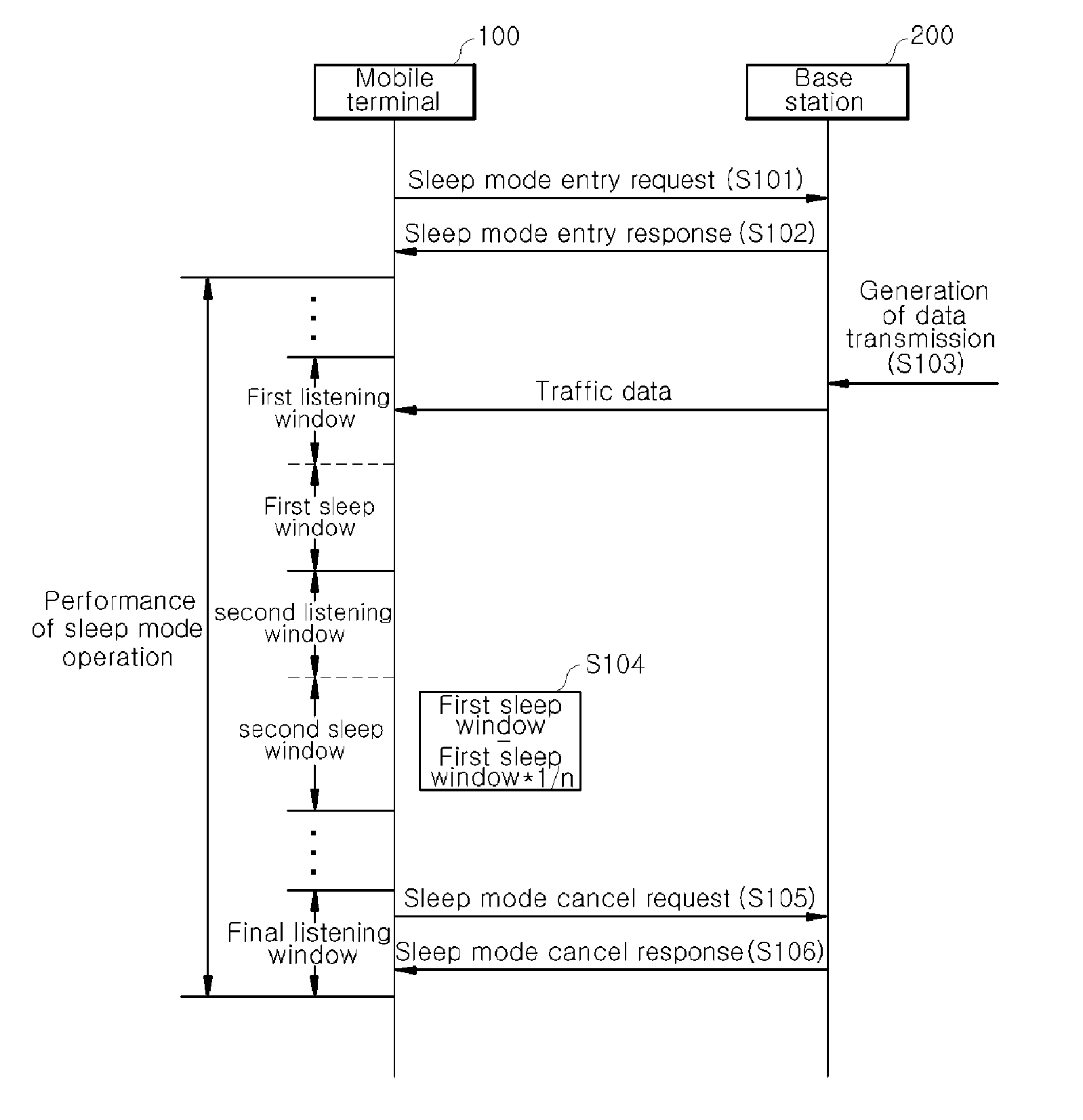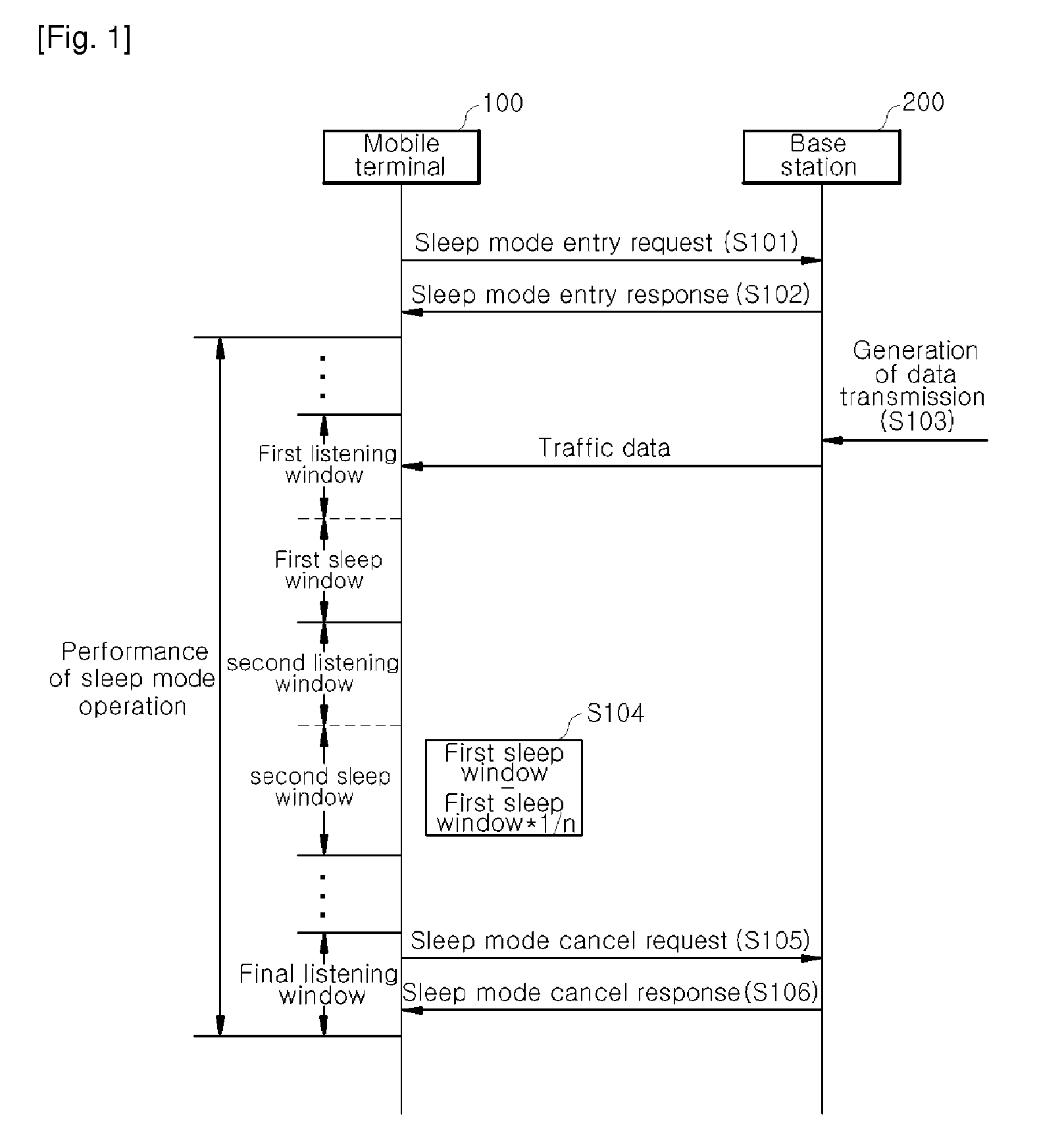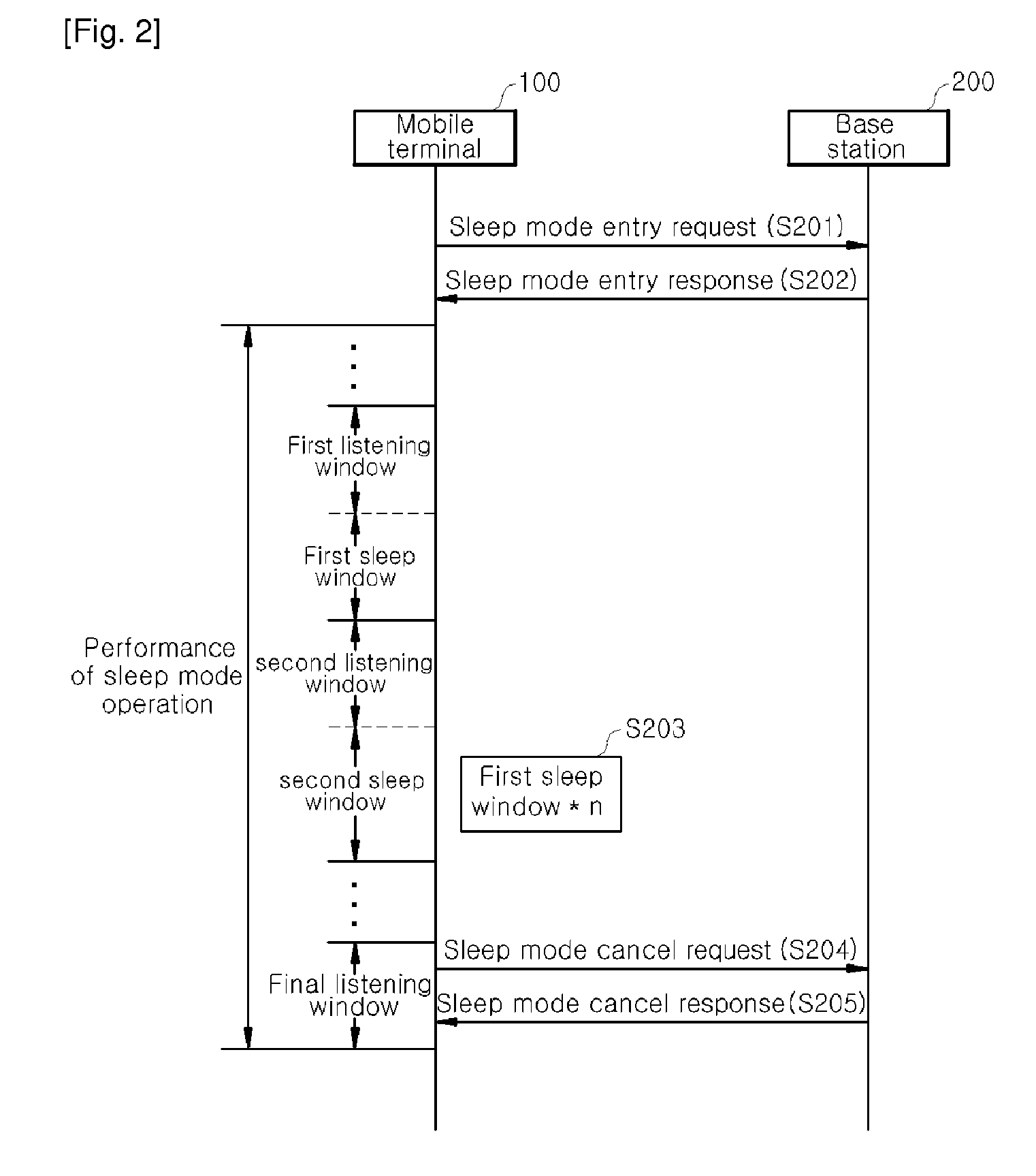Power saving method in mobile communication network
- Summary
- Abstract
- Description
- Claims
- Application Information
AI Technical Summary
Benefits of technology
Problems solved by technology
Method used
Image
Examples
exemplary embodiment 1
[0039]Exemplary Embodiment 1 relates to a method to minimize power consumption due to data delay by enhancing data transmission efficiency by gradually decreasing the length of a sleep window when data transmission is generated during a listening window.
[0040]FIG. 1 is a signal flowchart showing an operating method of a sleep mode according to Exemplary Embodiment 1 of the present invention.
[0041]If transmission or receipt of data is not generated for a predetermined time, a mobile terminal 100 transmits a predetermined message to a base station 200 to request entry into a sleep mode (S101), and the base station 200 that has received the request transmits a response message to the mobile terminal 100 to enter the sleep mode (S102).
[0042]If transmission of data is generated during the first listening window (S103), the mobile terminal 100 decreases the second sleep window by a predetermined ratio (S104). If the data transmission is generated during the sleep window, the data is tempo...
exemplary embodiment 2
[0053]Exemplary Embodiment 2 relates to a method to minimize power consumption by gradually increasing the length of a sleep window when data transmission is not generated during the listening window of class 1.
[0054]FIG. 2 is a signal flowchart showing an operating method of a sleep mode according to Exemplary Embodiment 2 of the present invention.
[0055]If transmission or receipt of data is not generated for a predetermined time, a mobile terminal 100 transmits a predetermined message to a base station 200 to request entry into sleep mode (S201), and the base station 200 that received the request transmits a response message to the request to the mobile terminal 100 to enter the sleep mode (S202).
[0056]If transmission of uplink or downlink data is not generated during the first listening window, the mobile terminal 100 increases the subsequent second sleep window by a predetermined ratio (S203). By way of example of predetermined increase ratios, (the first sleep window+the first s...
exemplary embodiment 3
[0068]Exemplary Embodiment 3 relates to a method to enhance data transmission efficiency by additionally allocating a temporary listening window, if the data transmission is continued during the listening window for a predetermined time. Here, although the expression “the allocation of the temporary listening window” is used, this may be considered to be the same concept as the expansion of the listening window in the related art.
[0069]FIG. 3 is a signal flowchart showing an operating method of a sleep mode according to Exemplary Embodiment 3 of the present invention.
[0070]If transmission or receipt of data is not generated for a predetermined time, a mobile terminal 100 transmits a predetermined message to a base station 200 to request entry into a sleep mode (S301), and the base station 200 that receives the request transmits a response message to the request to the mobile terminal 100 to enter the sleep mode (S302).
[0071]If the transmission of data is maintained during the first ...
PUM
 Login to View More
Login to View More Abstract
Description
Claims
Application Information
 Login to View More
Login to View More - R&D
- Intellectual Property
- Life Sciences
- Materials
- Tech Scout
- Unparalleled Data Quality
- Higher Quality Content
- 60% Fewer Hallucinations
Browse by: Latest US Patents, China's latest patents, Technical Efficacy Thesaurus, Application Domain, Technology Topic, Popular Technical Reports.
© 2025 PatSnap. All rights reserved.Legal|Privacy policy|Modern Slavery Act Transparency Statement|Sitemap|About US| Contact US: help@patsnap.com



